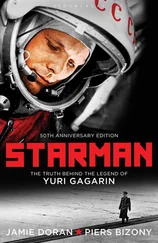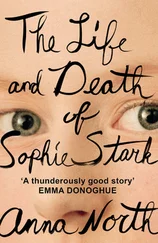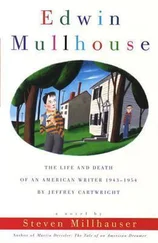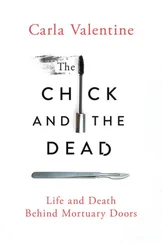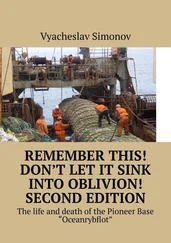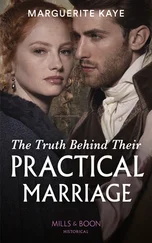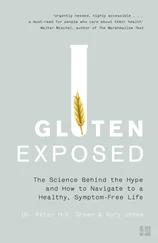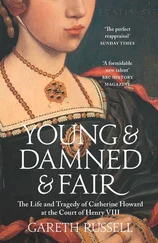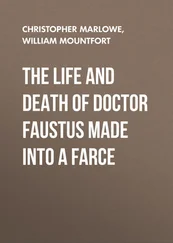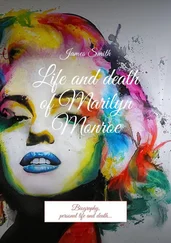Imray also informed me that after his departure from service in Kenya the possibility of recruitment to MI6 had cropped up. Following his interview, he had decided against the job, but confessed to me that at this point he too had come across the theory that Erroll had been ‘rubbed out’ by British Intelligence in Kenya.
The Erroll family have always been dissatisfied with the many salacious accounts of Lord Erroll’s life and death. Dinan, his only child, suffered greatly to see her father so misrepresented. There was even a rumour spread some time after his death that she was not Lord Erroll’s daughter – as if not satisfied with blackening his name, gossip-mongers wished to taint the lives of his progeny also. The physical likeness of her son Merlin, the 24th Earl, to his grandfather Lord Erroll put paid to that rumour. 19
The Erroll family had made attempts to find out the truth about their forebear. When I visited the Earl and Countess of Erroll in August 1995 I was handed a file to scrutinise. It contained correspondence from Merlin Erroll’s father, Sir Iain Moncreiffe, going back to 1953. His fruitless search through official archives on Erroll had led him to conclude that something ominous was lurking. 20 Merlin Erroll had drawn similar blanks in 1983 when he had turned to the head of the Search Department in the War Office Records for information on his grandfather. In fact, there had even been an apology from the Ministry of Defence ‘for such a negative report’, and the hope had been expressed that further information ‘might be forthcoming’. 21 It was not. It was general knowledge in the family that Erroll had received a posthumous Mention in Dispatches for ‘doing something on the Eritrean border’, but when Merlin entered into correspondence with a Major A. J. Parsons to find out more about it, he did not get far. Parsons pointed out, ‘The major campaign did not start until after he was dead’, and he could confirm only the Earl’s ‘suspicion that Mention in Dispatches can be awarded for both meritorious and gallant service’. 22 He had enclosed photocopies of the supplement to the London Gazette which published ‘the award to your grandfather’, and, he pointed out, ‘you will note that the preamble clearly states that awards were made to members of the Staff’, but there was no more detailed indication of how Lord Erroll had earned the Mention. Parsons had requested that the Army Records Centre trace Erroll’s personal service file. Having studied the file carefully, Parsons sent Merlin a copy of Erroll’s Army Form B199A recording his ‘intimate knowledge of France, Belgium, Scandinavia, Kenya Colony and Germany (four years)’ and stating that his French was fluent and his German was ‘fair’. 23 His covering letter said, ‘Unfortunately, it is sparse in content and gives very little detail of his military career, other than those shown … It is regrettable that the file does seem to have been “weeded” quite severely.’ 24
The weeding of sensitive information is well known to researchers. Material in files closed under the thirty- or fifty-year rule is sometimes burnt or shredded before the files are released. 25 I had been advised by one of the former secret agents I interviewed to watch out for any evidence of arson, missing documents, and papers scattered among alien files, since these could have been acts of sabotage perpetrated by agents in time of war. 26 One example of this was the Public Record Office file at Kew on Sir Henry Moore, Governor of Kenya at the time of Erroll’s murder. Marked ‘secret’, its contents had obviously been shuffled as there was no discernible order to the documents inside. 27 The only month for which the file contained no information was January 1941, the month of the shooting.
Among Merlin Erroll’s papers there was a 1988 article in the Glasgow Herald by Murray Ritchie: ‘Hundred-year Shroud on Happy Valley Mystery’. 28 While researching his article at the Public Record Office at Kew, Ritchie had come across a file listed under the general files for Kenya, marked with an asterisk denoting ‘Closed for a hundred years’. He was informed such closures were highly unusual – normally involving security, the royal family or personal records whose disclosure would cause distress to living persons. Ritchie had taken the number of this mysterious file. In his article he describes how the file had been brought towards him at the counter, but the bearer, pausing briefly to have a word with a colleague, had then carried it away.
Following the release in the 1990s of certain colonial files, I came to see the file that had eluded Murray Ritchie. While there were matters to do with Kenya in it, there was no mention of Lord Erroll. Instead there were some two dozen folios – each stamped ‘secret’, pertaining to Prince Paul and Princess Olga of Yugoslavia. They and their children had been kept under house arrest on Lake Naivasha in 1941. 29
I then discovered evidence of another file: it was listed in the Kenya Registers of Correspondence – under ‘Legislative Council. Death of Lord Erroll (103/3)’ – but marked ‘Destroyed Under Statute’. Fortuitously I stumbled across a document in yet another file that must have been transferred from this destroyed file – an instance of ‘papers scattered among alien files’ perhaps. It was a minute from Joss’s brother Gilbert, ‘[w]ho would be glad of any information in connection with the death of his brother’ – dated 27 January 1941. 30
By August 1996, I felt that my search for governmental documents on Lord Erroll was a wild-goose chase. The Metropolitan Police Archives had redirected me to the Public Record Office at Kew. They had warned me that there were no records about the policing of Kenya, suggesting I contact the Foreign and Colonial Office, which I did in July 1996 only to discover that my request had already been automatically referred there from the Met. The Foreign and Colonial Office simply referred me back to Kew again, to what transpired to be the Prince Paul file.
I began to realise that I had as much chance of finding any official papers on Erroll, as he had of leaping from his grave in Kiambu to tell me himself what had really happened to him. Even Robert Foran’s History of the Kenya Police * is silent on the subject of the Erroll murder. 31 It contains not even the names, let alone any other details, of the team investigating it. References in Foran’s book to relevant issues of The Kenya Police Review led me to believe that I would be able to locate these at least. Yet not a single copy was in the possession of any library in England. I was able to trace only one issue, through a private source. And I could not find any copies of The British Lion , a fascist publication in which, I had been assured, Erroll’s name had appeared. When I applied at Colindale Newspaper Library, I was informed that all three volumes of it that they possessed appeared to have been stolen the year before.
In 1988, Merlin Erroll had invited anyone to come forward who could throw light on his grandfather’s military or political career, observing, ‘Some say that the affair with Diana was a red herring.’ 32 One response came from a retired Lieutenant-Colonel John Gouldbourn, who had been with the Kenya Regiment in 1940. Gouldbourn’s view was forthright: ‘I do not doubt that there was a “cover-up” of the murder by the judiciary, the police and the military in that order. There were sufficient persons with an interest for there to be an “inner cabal” … You will appreciate the East African Colonial Forces (the KAR) * and the South African Division were poised to attack Somaliland. The dates would have been known to Joss Erroll. How discreet Erroll was is anybody’s guess.’ 33
When I first met John Gouldbourn in October 1995 he had whipped out his army identification papers and handed them to me – ‘so that you know that I am who I say that I am’. In all my years meeting interviewees, this procedure was a first. But for Gouldbourn, accustomed to the etiquette of the Intelligence world, proving one’s identity had become a matter of common courtesy. He provided me with names, but no addresses, of people who he thought would be helpful to my research. 34
Читать дальше

